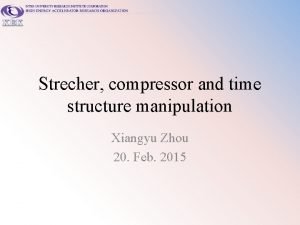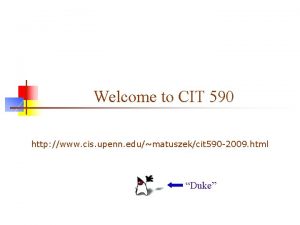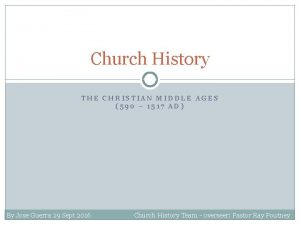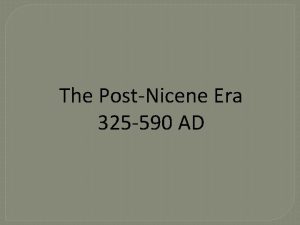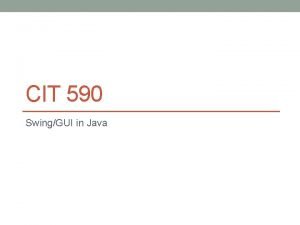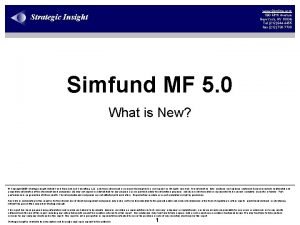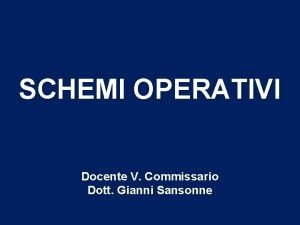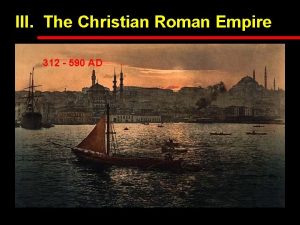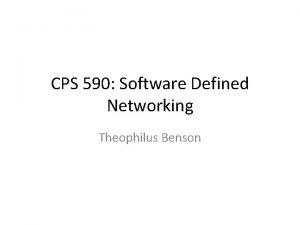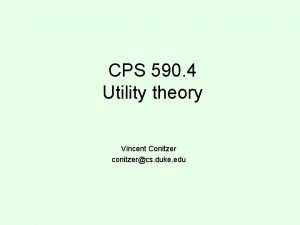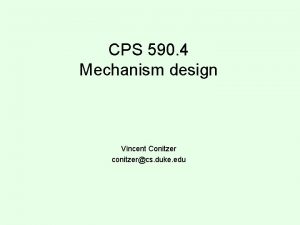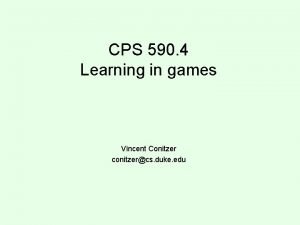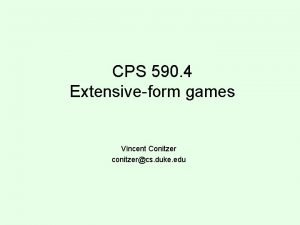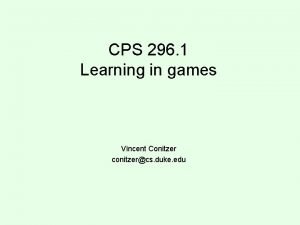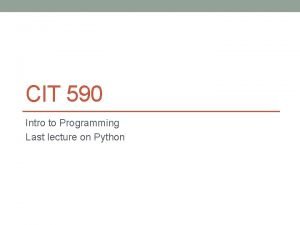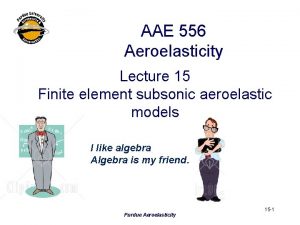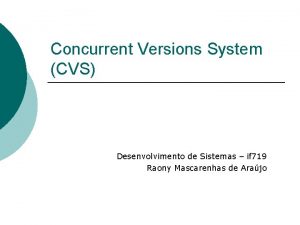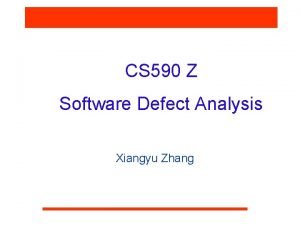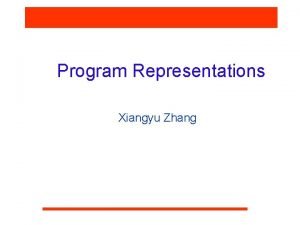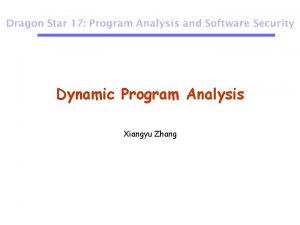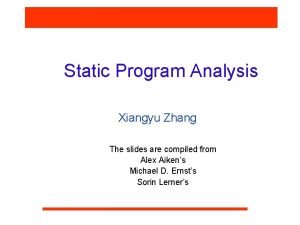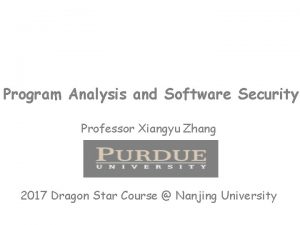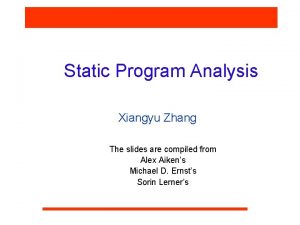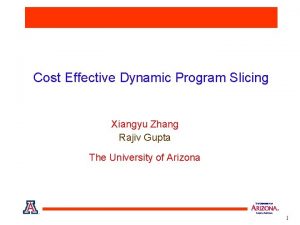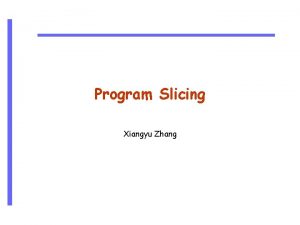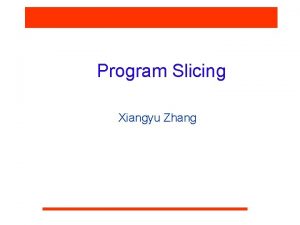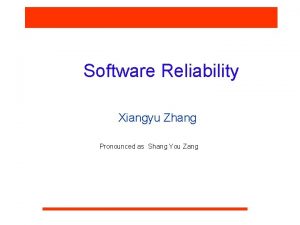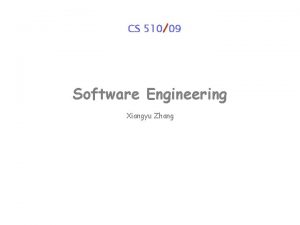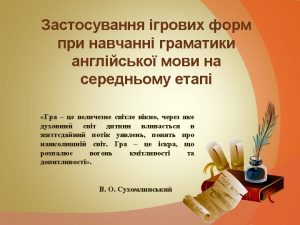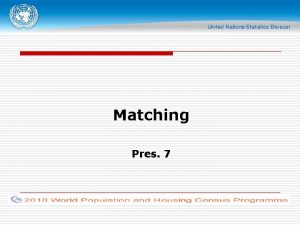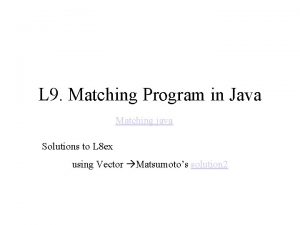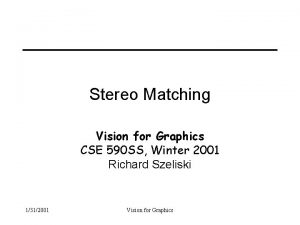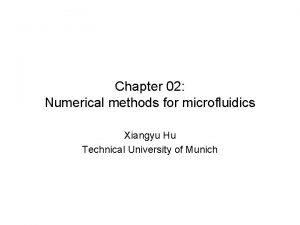CS 590 Z Matching Program Versions Xiangyu Zhang












![AST based matching q [YANG, 1991, Software Practice and Experience] • • q Given AST based matching q [YANG, 1991, Software Practice and Experience] • • q Given](https://slidetodoc.com/presentation_image/4e3cd4c5be237a0f5019997c86b64a7f/image-13.jpg)








- Slides: 21

CS 590 Z Matching Program Versions Xiangyu Zhang

Problem Statement q Suppose a program P’ is created by modifying P. Determine the difference between P and P’. For an artifact c’ in P’, decide if c’ belongs to the difference, if not, find the correspondence of c’ in P. • • Static mapping Non-trivial v v • Name comparison? What if Clone analysis, comparison checking CS 590 Z

Motivations q Validate compiler transformations q Facilitate regression testing q Reverse obfuscation q Information propagation q Debugging q Code plagiarism detection q Information Assurance CS 590 Z

Approaches q Static Approaches • • q Entity name based String based (MOSS) AST based (DECKARD) CFG based (JDIFF) PDG based (PDIFF) Binary based (BMAT) Log based (editor plugin, comparison checking) Dynamic Approaches (not today) CS 590 Z

Static Approaches q Entity name matching • • q Model a function/field as tuples Coarse grained matching String matching • • Diff (CVS, Subservion) Longest common subsequence (LCS) v v v • Available operations are addition and deletion Matched pairs can not cross one another Programs are far more complicated than strings ü Copy, paste, move CP-Miner (scale to linux kernel clone detection) v Frequent subsequence mining CS 590 Z

MOSS q Code plagiarism detection • q Challenges • • • q It also handles other digital contents White space (variable name) Noise (“the”, “int i”); Order scrambling (paragraph reorders) Problem statement • Given a set of documents, identify substring matches that satisfy two properties: v v If there is a substring match at least as long as the guarantee threshold t, then this match is detected; Do not detect any matches shorter than the noise threshold, k. CS 590 Z

MOSS q k-gram • A continuous substring of length k CS 590 Z

MOSS q Incremental hashing • • Hashing strings of length k is expensive for large k. “rolling” hash function v The (i+1)th k-gram hash = F (the ith k-gram hash, …) CS 590 Z

MOSS q Fingerprint selection • A subset of hash values • Our goals: find all matching substrings >t; ignore matchings <k) One of every tth hash values 0 mod p • • CS 590 Z

MOSS q Winnowing • • • Observation: given a sequence of hashes h 1, …hn, if n>t-k, then at least one of the hi must be chosen Have a sliding window with size w=t-k+1 In each window select the minimum hash value, break ties by select the rightmost occurrence. CS 590 Z

MOSS q Algorithm • • Build an index mapping fingerprints to locations for all documents. Each document is fingerprinted a second time and the selected fingerprints are looked up in the index; this gives the list of all matching fingerprints for each document. Sort (d, d 1, fx), (d, d 2, fy) by the first two elements. Matches between documents are rank-ordered by size (number of fingerprints) CS 590 Z

MOSS q Advantages • q Guarantee to detect any >t substring matches Limitations • Minor edits fail MOSS. v • x= a*b + c vs. z= c + a*b Insertion, deletion CS 590 Z
![AST based matching q YANG 1991 Software Practice and Experience q Given AST based matching q [YANG, 1991, Software Practice and Experience] • • q Given](https://slidetodoc.com/presentation_image/4e3cd4c5be237a0f5019997c86b64a7f/image-13.jpg)
AST based matching q [YANG, 1991, Software Practice and Experience] • • q Given two functions, build the ASTs Match the roots If so, apply LCS to align subtrees Continue recursively Fragile CS 590 Z

DECKARD (ICSE 2007) CS 590 Z

DECKARD q Advantages • • q Scalability Insensitive to minor structural changes such as reordering, insertion, deletion Limitations • • Structural similarity only Insertion that incurs structure change. CS 590 Z

CFG matching Hammock graph (JDIFF , ASE 2004) q • • Match classes by names Match fields by types Match methods by signatures Match instruction in methods by hammock graphs v A hammock is a single entry single exit subgraph of a CFG. CS 590 Z

CFG matching q Pros • Orthogonal v • q Can be combined with other matching techniques Simple Cons • Coarse grained matching only v • Not good at clone detection In case of code transformation CS 590 Z

Semantic Based Matched q Using PDG (SAS’ 01) CS 590 Z

Semantic Based CS 590 Z

Semantic Based q Pros • • q Non-contiguous, intertwined, reordered Insensitive to code transformations. Cons • Scalability v • Points-to analysis Starting from a matching pair seems to be a problem CS 590 Z

Wrap Up q For clone detection • q For whole program matching / method matching with code transformations • q Maybe structural / text similarity is a good idea Semantic based is more appropriate Scalability • PDG < CFG | AST < STRING < NAME CS 590 Z
 Pulse strecher
Pulse strecher Blue letter bible app
Blue letter bible app Upenn cis courses
Upenn cis courses Toefl itp vs pbt
Toefl itp vs pbt The medieval church (590-1517 ce)
The medieval church (590-1517 ce) 590 ad
590 ad Java 590
Java 590 590 fifth avenue
590 fifth avenue Ahri
Ahri Lesioni stradali procedibilità
Lesioni stradali procedibilità 590 ad
590 ad 105 cmr 590
105 cmr 590 Cps 590
Cps 590 Cps 590
Cps 590 Cps590
Cps590 Cps 590
Cps 590 Cps590
Cps590 Cps590
Cps590 Cit 590
Cit 590 Purdue aae 590
Purdue aae 590 Concurrent versions system
Concurrent versions system Gender roles in snow white and the seven dwarfs
Gender roles in snow white and the seven dwarfs
